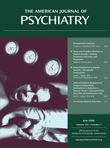Psychoactive substances, both legal (e.g., alcohol, tobacco, or prescription medications) and illegal (e.g., cocaine, heroin, or cannabis), present a major public health problem in the United States and around the world. Substance use disorders exact a substantial health burden on the user, his or her social network, and society at large. Community-based epidemiologic studies in the United States estimate that more than 22 million youth and adults (9% of that age group) abuse or are dependent on alcohol or other non-nicotine drugs, with almost 73 million Americans using tobacco products, half of whom have developed dependence. The economic costs (health care, lost productivity, crime, etc.) in the United States have been estimated at over $500 billion annually. This burden spares no segment of society; substance use disorders occur in individuals of all ages, races, ethnicities, and levels of economic status and in both genders.
Despite this seemingly obvious need for urgent and substantial action, addiction treatment remains largely a stepchild of our health care system. As former U.S. Surgeon General C. Everett Koop observes in the introduction of this book, a stranger in any U.S. city can readily obtain his or her preferred psychoactive substance, often within minutes. In contrast, even an established citizen with health insurance often finds it difficult to access appropriate addiction treatment. This slim yet provocative volume explores many of the factors responsible for this unfortunate state of affairs and offers some potential solutions. Each brief chapter (almost all are less than 10 pages, including references) addresses a particular issue or solution. While there is no attempt at an integrated overview, the collection of chapters as a whole presents a thought-provoking look at many of the most salient factors and solutions. Many of the authors are leaders in the field and prominent researchers and clinicians.
One common theme is the disconnect, not seen in other fields of medicine and public health, between our rapidly improving scientific understanding of addiction and commonly held views of the public and politicians. Contributing author Dr. Alan Leshner, former director of the National Institute on Drug Abuse, points out that this disconnect leads to public policy and strategies for dealing with addiction that are driven more by ideology and intuition than by principles of science and evidence-based medicine. This is occurring even though addiction science is in the forefront of current biomedical advances, making productive use of new techniques in molecular and population genetics, in vivo brain imaging, and bioinformatics.
The stigma toward addicts is one aspect of this disconnect. People with addiction are considered as suffering from a moral defect or failure of willpower rather than from a chronic, relapsing health condition with biological, psychological, and environmental components. As a consequence, a person with addiction is considered to be appropriately dealt with in the criminal justice system rather than the health care system or may be considered as not needing to be dealt with at all. A prominent example is the view that pregnant women who use drugs should be prosecuted as criminals (for endangering the fetus) rather than considered patients with a serious illness who need treatment. Regardless of ideology, this approach does not appear to be of long-term benefit to either the mother or the fetus, because it discourages participation in addiction treatment.
Even within the health care system, ideology and stigma may lead to dysfunctional responses. For example, insurance laws in many states allow insurance companies to deny payment for emergency treatment rendered to patients who are intoxicated. Not surprisingly, this creates a strong disincentive for emergency departments and trauma centers to screen for and document substance intoxication. However, up to half of all patients admitted to trauma centers are under the influence of alcohol or other drugs. Thus, this legal policy results in denying many patients the opportunity for diagnosis and eventual treatment of their substance use disorder.
Partly because of current societal and political attitudes, the addiction treatment system is underfunded and understaffed, restricting access for many who need treatment. Several chapters present novel and promising ideas for improving the efficiency and effectiveness of addiction treatment within this environment. These include computer- and Internet-based interactive technology for diagnosis, treatment, and follow-up; behavioral treatment approaches, such as contingency management; psychological treatment approaches that increase motivation and autonomy; and integrative care models that actively engage populations at risk. Some of these approaches have already shown promise in small-scale pilot efforts, but they need to be expanded. A few chapters present more speculative ideas that need further research, such as the possible influence of diet and nutritional factors on addiction. The editors are to be commended for including several chapters that present viewpoints contrary to the conventional wisdom in the field, for example, that stigma might be a positive factor in encouraging prevention and treatment participation, or that receiving a diagnosis of substance dependence might itself impair long-term recovery.
The overall goal of this book is well illustrated in the chapter written by its editors, Drs. Henningfield, Santora, and Bickel. The authors describe how “addiction art” (i.e., art by and about people with addiction) may “bridge the gap between the science of addiction and the human experience of addiction,” thereby helping to stimulate much needed positive change in public attitudes and policy toward addiction treatment (several pages of color photographs of such art are inserted in the book). This book as a whole should serve to stimulate a rethinking of current attitudes toward addiction treatment among clinicians and scientists in the field, as well as among policy makers and the public.

